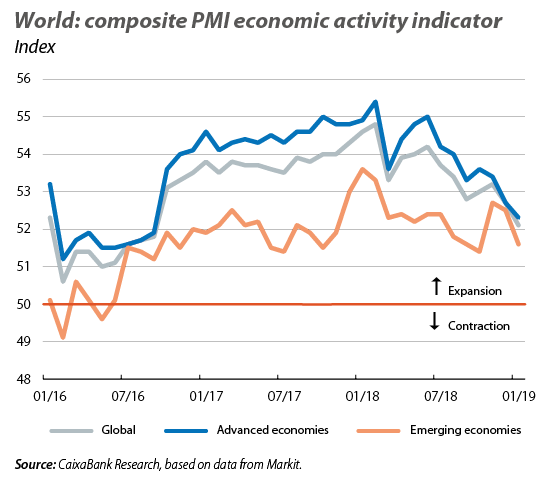April 10, 2019
Demand Schedule Definition, What is Demand Schedule, and How Demand Schedule works?
Contents
The result obtained for a substitute good would always come out to be positive as whenever there is a rise in the price of a good, the demand for its substitute rises. The result obtained from this formula helps to determine whether a good is a necessity good or a luxury good.
However, perfectly elastic demand is a total theoretical concept and doesn’t find a real application, unless the market is perfectly competitive and the product is homogenous. In perfectly elastic demand, even a small rise in price can result in a fall in demand of the good to zero, whereas a small decline in the price can increase the demand to infinity. When there is a sharp rise or fall due to a change in the price of the commodity, it is said to be perfectly elastic demand. The effect of change in economic variables is not always the same on the quantity demanded for a product. The income levels of consumers play an important role in the quantity demanded for a product.
- The supply schedule shows the quantity which a manufacturer can supply to the market at a particular price level.
- Save taxes with ClearTax by investing in tax saving mutual funds online.
- Under such a scenario, the graph moves along the Y-axis, as the price is plotted against it.
- This can be understood by looking at the difference in goods sold in the rural markets versus the goods sold in metro cities.
Both these laws help in understanding the interaction of market prices with the Demand for goods and their supply. It is not just the price and quantity that affect the Demand Curve but there are also several other impactful factors. According to the law of supply, with an increase in prices, the quantity supply also increases. The economy continually keeps changing, and so does the Demand in the current market. Every business and even the industries keep a record of how this Demand changes.
The Demand Curve and Shift of the Demand Curve
For example, when there is a rise in the prices of ceiling fans, the quantity demanded goes down. A demand schedule is often studied along with the supply schedule. The supply schedule shows the quantity which a manufacturer can supply to the market at a particular price level. The plotting of both the demand schedule and the supply schedule on a graph enables understanding of the pricing patterns and the dynamics of the price and demand. The numerical value of relatively inelastic demand always comes out as less than 1 and the demand curve is rapidly sloping for such type of demand. Thus, the slope of the demand curve for a perfectly elastic demand is horizontal.

For example, if the price of a good goes down by 10%, the proportionate change in its demand will not go beyond 9.9..%, if it reaches 10% then it would be called unitary elastic demand. In relatively elastic demand, if the price of a good increases by 25% then the demand for the product will necessarily fall by more than 25%. In a market where there is an oligopoly, multiple players compete.
e-Invoicing Software
For instance, if the price increases from 10to12 for a commodity, then the supply decreases from 100 to 80. The degree of elasticity of demand helps to define the slope and shape of the demand curve. Therefore, we can determine the elasticity of demand by looking at the slope of the demand curve. The demand for a product a demand curve which drops in stages is called can be elastic, inelastic, or unitary, depending on the rate of change in the demand with respect to the change in the price of a product. A movement and Shift can also occur in the same Curve over a longer time period. Initially, an increase in price for a certain commodity could lead to a movement in the Curve.
This happens when there is a change in any other factor apart from the price. It could be due to the quantity, consumer income, or several other factors on which the Demand Curve is based. According to the law of Demand, with increases in prices, the Demand decreases. Elasticity is a concept in economics that talks about the effect of change in one economic variable on the other. ClearTax offers taxation & financial solutions to individuals, businesses, organizations & chartered accountants in India. ClearTax serves 1.5+ Million happy customers, 20000+ CAs & tax experts & 10000+ businesses across India.
What are the types of demand curve?
What are the types of the demand curve? In economics theory, there are different kinds of curves. Primarily, demand curves are classified into elastic, inelastic, individual, and market curves.
However, with time, it could lead to a Shift in the same Curve, depending on other factors. Movement along the Demand Curve happens because of the change in the price of commodities. Under such a scenario, the graph moves along the Y-axis, as the price is plotted against it.
Our GST Software helps CAs, tax experts & business to manage returns & invoices in an easy manner. Our Goods & Services Tax course includes tutorial videos, guides and expert assistance to help you in mastering Goods and Services Tax. ClearTax can also help you in getting your business registered for Goods & Services Tax Law.
Tax Saving Investment Made Simple
The second column will display the quantity of the product demanded at various prices. The price is based on findings of market survey or market research for each product. A demand schedule is a plotting of demand for goods and services as part of economic https://1investing.in/ analysis. The demand schedule refers to a table depicting the demand in quantity terms for goods or services at varying price levels. The plotting of a demand schedule on a graph depicts the quantity on the X-axis and the price on the Y-axis.
In a normal demand and supply relationship, the quantity demanded falls with an increase in the price of the goods or services. In case all the other factors are assumed to be equal, the market should reach an equilibrium at the point where supply and demand schedules meet on the graph. Like perfectly elastic demand, the concept of perfectly inelastic is also a theoretical concept and doesn’t find a practical application. However, the demand for necessity goods can be the closest example of perfectly inelastic demand.
Expert Assisted Services
On the basis of the amount of fluctuation shown in the quantity demanded of a good, it is termed as ‘elastic’, ‘inelastic’, and ‘unitary’. Unlike the aforementioned types of demand, relatively elastic demand has a practical application as many goods respond in the same manner when there is a price change. Unitary elasticity is one in which the fluctuation in one variable and quantity demanded is equal. This measure of responsiveness of quantity demanded when there is a change in price is termed as the Price Elasticity of Demand . CAs, experts and businesses can get GST ready with ClearTax GST software & certification course.
Thus, the quantity demanded for a product does not only depend on itself but rather, there is an effect even when prices of other goods change. The result obtained from this formula determines the intensity of the effect of price change on the quantity demanded for a commodity. Any change in the price of a commodity, whether it’s a decrease or increase, affects the quantity demanded for a product.
What is perfectly inelastic demand curve?
If a demand curve is perfectly vertical (up and down) then we say it is perfectly inelastic. If the curve is not steep, but instead is shallow, then the good is said to be “elastic” or “highly elastic.” This means that a small change in the price of the good will have a large change in the quantity demanded.
So, in such a scenario, with an increase in price, the Demand decreases, and with a decrease in price, the Demand increases. We can further classify these elastic and inelastic types of demand into five categories. For all the supplies that a company provides, there are changes in the Demand Curves; but based on what factors does this happen? You can expect the changes in the Demand Curve based on the following two factors. Needs to review the security of your connection before proceeding.
FAQs on Movement Along the Demand Curve and Shift of the Demand Curve
This can be understood by looking at the difference in goods sold in the rural markets versus the goods sold in metro cities. Save taxes with ClearTax by investing in tax saving mutual funds online. Our experts suggest the best funds and you can get high returns by investing directly or through SIP. The demand curve for unitary elastic demand is represented as a rectangular hyperbola.

For better analysis and understanding, usually, a Demand Curve is created. Is there any difference between the movement and Shift along the Demand Curve? The demand curve of relatively elastic demand is gradually sloping. Relatively elastic demand refers to the demand when the proportionate change in the demand is greater than the proportionate change in the price of the good. The numerical value of relatively elastic demand ranges between one to infinity.
What are the 4 ways demand can shift?
- Change in Taste and Preferences.
- Population Increase or Decrease.
- Price Change of a Related Good.
- Change in the Expected Future Prices.
- Change in the Income Level of Buyers.
An elastic demand is one that shows a larger fluctuation in the quantity demanded of a product, in response to even a little change in another economic variable. For example, if there is a hike of $0.5 in the price of a cup of coffee, there are very high chances of a steep decline in the quantity demanded. In a relatively inelastic demand, the proportionate change in the quantity demanded for a product is always less than the proportionate change in the price.
Sign up to our
Newsletter to get updates.

Enter your email address and click on Subscribe
